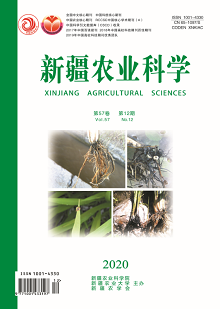|
|
Empirical Analysis Based on the Probit Model on the Smart Water Conservancy Construction and the Participation Willingness of Rural Social Subjects in Arid Areas
ZHANG Ning, ZUO Li, CHEN Tong, ZHANG Lan, DONG Hongji
2020, 57(12):
2340-2350.
DOI: 10.6048/j.issn.1001-4330.2020.12.021
【Objective】 To explore the factors influencing the willingness of multiple subjects to participate in smart water conservancy in three prefectural regions of Southern Xinjiang. 【Method】 Data were collected through questionnaire survey, symposium and other methods, and the data of four multiple subjects, namely administration department, rural community, water organizations and individual farmers, were sorted and classified. Probit model was used to analyze the factors influencing the willingness of multiple subjects to participate in smart water conservancy. 【Result】 On the premise of reasonably identifying multiple subjects categories, a total of 462 valid questionnaires were recovered, among which 299 people, accounting for 64.72%, were willing to participate in the construction of smart water conservancy. Among them, the participation proportion of four types of multiple subjects all exceeded 60%, and the participation willingness of rural communities accounted for the largest proportion, reaching 68.33%. The proportion of administration department willing to participate was 61.06%, and the proportion of individual farmers and farmers' water organizations were the same, 64.39% and 64.95% respectively. 【Conclusion】 Education level, social capital accumulation, the authority of social recognition, community economic situation and network information platform have a positive impact on the willingness of administrotion departments to participate in the construction of smart water conservancy. Education level, social capital accumulation, project familiarity, community economic situation, network information platform have a positive impact on the willingness of rural communities to participate in the construction of smart water conservancy. Age, social capital accumulation, the authority of social recognition, community closeness, information sharing degree have a positive impact on the willingness of farmers' water organization to participate in the construction of smart water conservancy. Annual family income, the authority of social recognition, project familiarity, community closeness and information sharing degree have a positive relationship with individual farmers' willingness to participate in smart water conservancy construction.
|

